American Vs. European Dobermans: 10 Distinctive Traits Compared

Potential owners must understand the differences between American and European Doberman Pinschers before they make a choice. This article highlights 10 key distinctions, helping you make informed decisions and appreciate each variant’s unique traits. While both share a common ancestry, their differences are similar to those between working and show lines in other breeds.
Origin And Development

The Doberman breed originated in Germany during the late 19th century and was developed by Louis Dobermann. Over time, European breeding practices focused on maintaining the dog’s working abilities, resulting in the robust European Doberman. Conversely, American breeders emphasized elegance and temperament, tailoring the American Doberman Pinscher towards companionship and show standards.
Size And Build
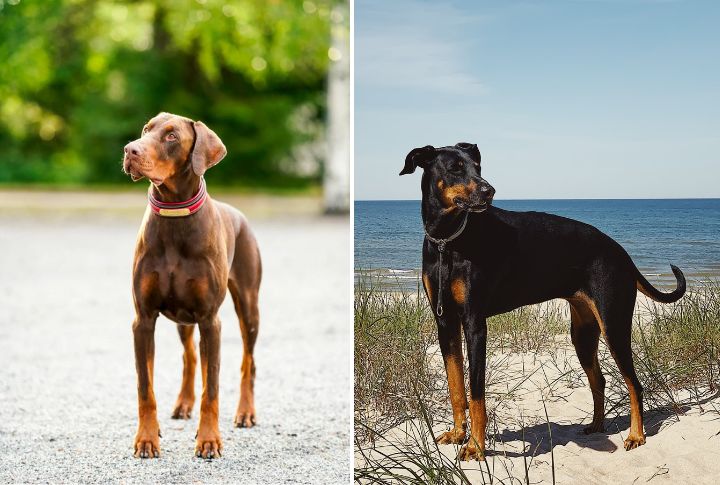
European Dobermans, males weigh between 88 and 99 pounds and stand 27 to 28 inches tall; females are slightly smaller. American Doberman Pinschers are lighter. Males weigh 75 to 100 pounds and stand 26 to 28 inches tall, while females weigh 60 to 90 pounds and measure 24 to 26 inches.
Head And Facial Features
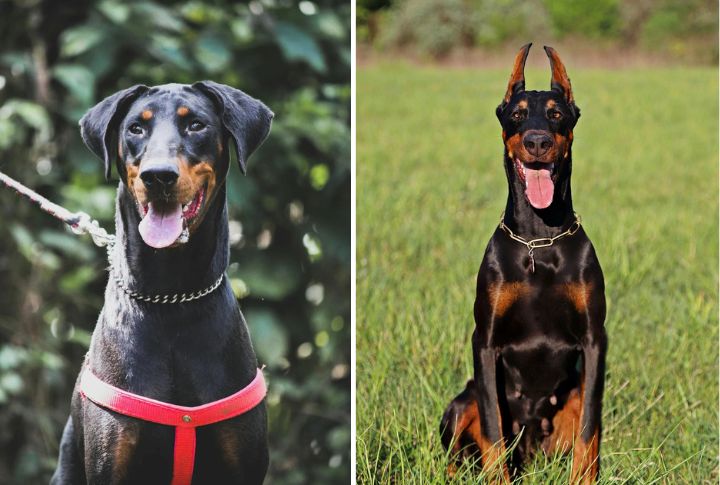
The head structure of these Dobermans also differs. European Dobermans possess a broader head with a thicker muzzle. Their eyes are typically dark and oval-shaped. American Doberman Pinschers features a more elongated head with a slender, tapering muzzle. Their almond-shaped eyes can vary in color, often corresponding to their coat shade.
Coat Colors

The American Kennel Club (AKC) recognizes four color combinations for American Doberman Pinschers: black and rust, blue and rust, red and rust, and fawn and rust. In contrast, the Federation Cynologique Internationale (FCI) standard for European Dobermans permits only two colors: black and rust, brown and rust.
Temperament

European Dobermans are known for their drive and assertiveness, making them suitable for working roles such as police or military service. They exhibit strong protective instincts and require consistent training and socialization. American Dobermans often have a more laid-back temperament, which is why they’re great family pets. However, those from working-line breeders can still exhibit strong protective instincts.
Exercise And Energy Levels
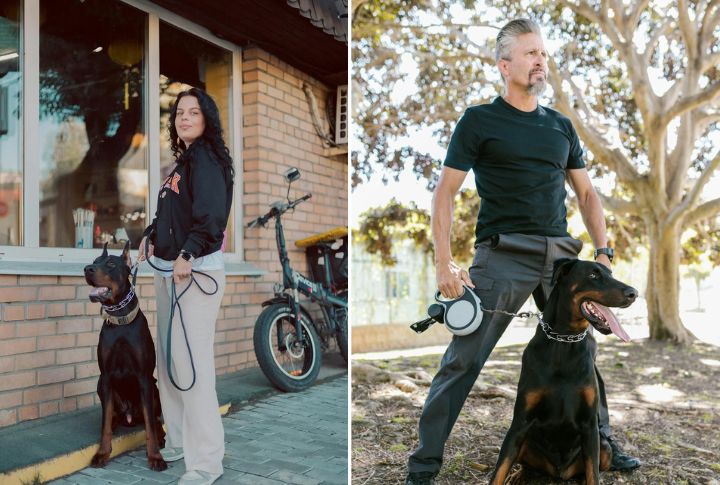
European Dobermans have high energy levels and require substantial physical and mental stimulation. They thrive in environments where they have a job to do or engage in regular vigorous activities. American Doberman Pinschers also need regular exercise but may be more content with moderate activity levels, such as daily walks and play sessions.
Training And Intelligence
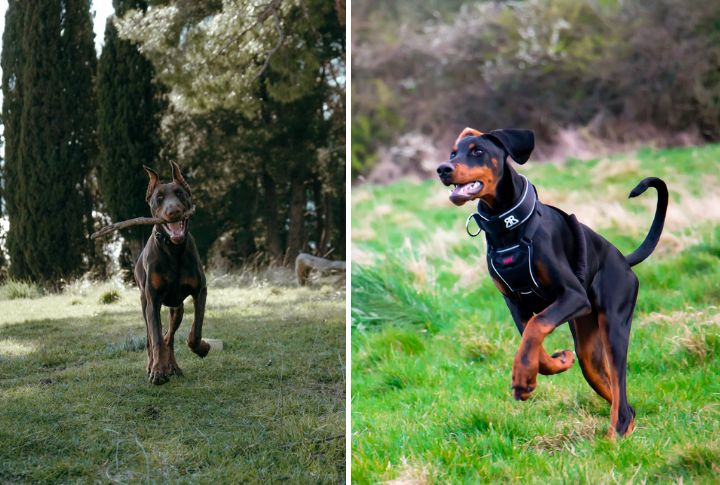
Both American and European Dobermans are highly intelligent and trainable. European Dobermans excel in disciplines requiring endurance and precision, such as protection work and competitive obedience. American Doberman Pinschers are also quick learners and display a vast desire to please their owners; this makes training a rewarding experience.
Health And Lifespan

Both varieties share similar health concerns, including predispositions to conditions such as dilated cardiomyopathy and hip dysplasia. With proper care, their lifespan typically ranges from 10 to 13 years. Prospective owners should pay attention to these potential health issues and choose reputable breeders who prioritize genetic testing and overall well-being in their breeding programs.
Roles
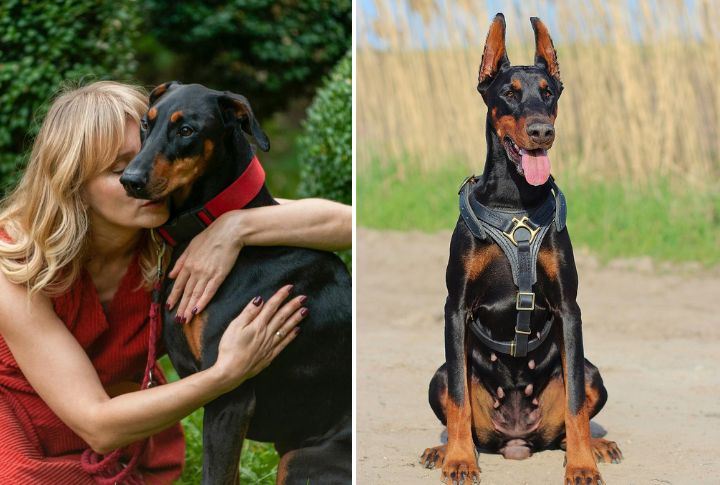
European Dobermans are often employed in search and rescue, police work, and personal protection. Their breeding emphasizes working ability and drive. American Doberman Pinschers are primarily bred for companionship and excel in the show ring. Their temperament and appearance align with roles that prioritize aesthetics and family-friendly characteristics.
Breed Standards
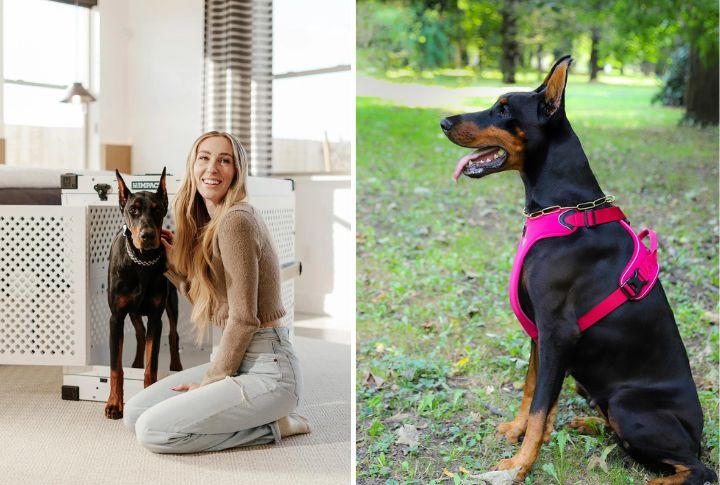
Breed standards for Dobermans differ between the American Kennel Club (AKC) and the Federation Cynologique Internationale (FCI). The AKC standard for American Doberman Pinschers emphasizes a sleek body and a temperament suitable for companionship and show. The FCI standard for European Dobermans focuses on a robust, muscular build and a temperament aligned with working capabilities.





